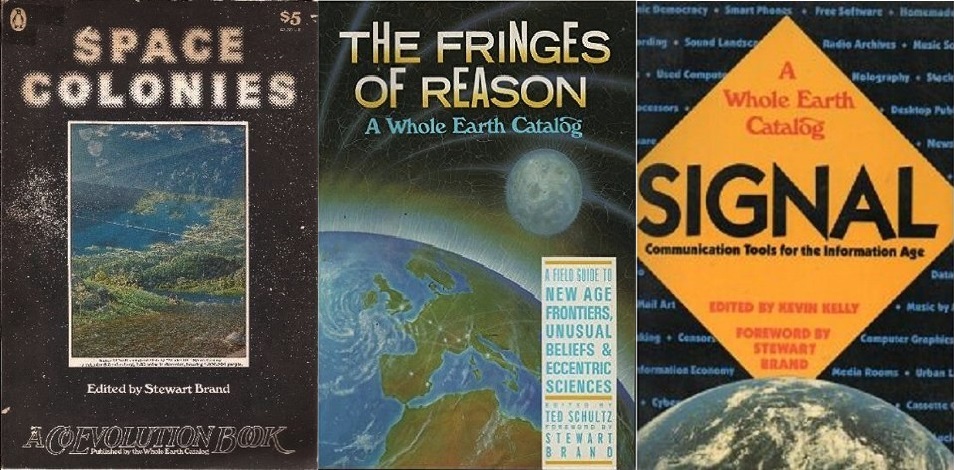
Go to Whole Earth Collection Index

From WholeEarth.com - http://www.wholeearth.com/issue/1290/article/342/a.brief.history.of.the.whole.earth.catalog
1968 - Stewart Brand initiates The Whole Earth Catalog as "a Low Maintenance, High Yield, Self Sustaining, Critical Information Service." Self-published, with no advertising, it sold 1000 copies at $5 each.
1969 - Now published quarterly with Supplements in between, the Catalog has also become an exchange for interesting ideas and heresies - mostly from readers. Sales reached 60,000 by Fall.
1971 - Whole Earth and Stewart are internationally famous, with Catalog sales in the hundreds of thousands. Stewart expects that the many specialized Catalog-inspired publications will take over the job we have started. He publishes the fat Last Whole Earth Catalog as a farewell performance. The non-profit POINT Foundation is founded to disburse whatever funds have accumulated.
1972 - Stewart Brand wins the National Book Award. POINT money is distributed to the Jonah Project (a whale-saving operation), New Alchemy Institute (see p. 83), and the Trust for Public Land (p. 111), among others. Sales of the now obsolete Last Whole Earth Catalog continue at 5,000 a week.
1973 - Demand for the Catalog continues unabated. Recognizing that nobody has grabbed the ball, POINT resumes publication with The Updated Last Whole Earth Catalog.
1974 - Stewart inaugurates the CoEvolution Quarterly, a reader-supported journal featuring long articles on unorthodox subjects, some considered unacceptable to magazines restricted by advertising. Reviews of tools and books let the CQ replace the Supplements as Catalog updates, but the deluge of new information forces POINT to augment The Updated Last Whole Earth Catalog with the Whole Earth Epilog in the Fall.
1976 - Working with pioneer bioregionalists, POINT produces the first World Biogeographical Provinces map.
1977 - POINT produces two books: Space Colonies, a serious consideration and critique of proposals for living in space, and Soft Tech, a look at applied state-of-the-art appropriate technology.
1978 - We celebrate our tenth year with the Whole Earth Jamboree, and publish "One Million Galaxies", a poster showing for the first time the large-scale textures of the Universe.
1980 - POINT "pushes paper technology to the limit" with the 608 page, 5 pound, 2,700 item, Next Whole Earth Catalog.
1981 - And updates it with an even heavier 3,907 item second edition.
1984 - Stewart leads POINT into a new era with The Whole Earth Software Catalog 1.0, and a companion magazine, Whole Earth Software Review. With reviews still unsullied by pressure from advertising, the two are a critical success, but inevitably out-of-date before they hit the newsstands. After just three issues, the magazine is assimilated by CQ to become the Whole Earth Review.
1985 - POINT convenes the first "Hacker's Conference," the Whole Earth Software Catalog 2.0 appears, and a regional computer teleconferencing system, the Whole Earth 'Lectronic Link (WELL) is born.
1986 - We distill the best we've found in eighteen years and decant it as the fat and chunky, urban-oriented Essential Whole Earth Catalog. The vigorously growing WELL breaks even.
1988 - After a year of development supported by Apple Computer, Inc. the Essential Catalog is redeployed on CD-ROM as The Electronic Whole Earth Catalog (available from Broderbund Software, 17 Paul Drive, San Rafael, CA 94903-2101; 800/521-6263; $153) A taste of things to come, it features music catalogs with sound.
1988 - POINT produces two books using desktop publishing techniques: Signal: Communication Tools for the Information Age, and The Fringes of Reason: A Field Guide to New Age Frontiers, Unusual Beliefs and Eccentric Sciences. The Well now has more than 2000 paying users.